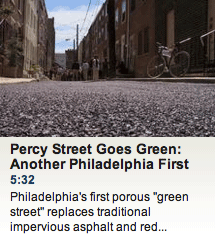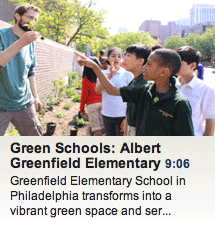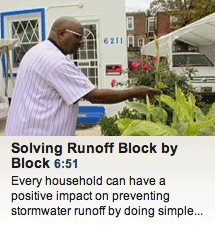
There has been alot of talk about "green infrastructure" over the last several years--and communities all across the nation are slowly moving towards this more natural approach.
Green Infrastructure
At the largest scale, the preservation and restoration of natural landscape features (such as forests, floodplains and wetlands) are critical components of green stormwater infrastructure. By protecting these ecologically sensitive areas, communities can improve water quality while providing wildlife habitat and opportunities for outdoor recreation. On a smaller scale, green infrastructure practices include rain gardens, porous pavements, green roofs, infiltration planters, trees and tree boxes, and rainwater harvesting for non-potable uses such as toilet flushing and landscape irrigation.
In Pennsylvania, these ideas are really starting to take off. The Philadelphia Water Department has been at the forefront of using green solutions to meet the challenges presented by rain, and we're thrilled to be working to document and share the many innovative practices that are being put into place. Harrisburg, Lancaster, Pittsburgh, and many other cities and towns are getting aboard and an exciting movement is in the making. Businesses, farmers, and homeowners are also joining the mix.
This 3 minute promo about Philadelphia's effort offers a pretty exciting vision of what a City can be:
Other Videos
We've developed an entire series of videos in partnership with PWD and others to show not only how the cityscape is changing, but how neighborhoods are being positively impacted by the Green Tools that are being used to deal with rainwater. Below is a small sampling; go to Videos to check out the rest:
Related News from our Blog
EPA's Approach
Green infrastructure (GI) uses vegetation, soils, and natural processes to manage water and create healthier urban environments, and it's a concept that's been actively promoted by the U.S. EPA since 2007. Philadelphia has been a national leader in using this "above-the-ground" approach and is breaking new ground with its ambitious Green City, Clean Waters program.
In October 2013, EPA released a new strategic agenda (PDF) renewing the Agency’s support for green infrastructure and outlining the actions the Agency intends to take to promote its effective implementation.
EPA is also compiling a comprehensive set of resources from around the country; Visit EPA's Green Infrastructure site.





